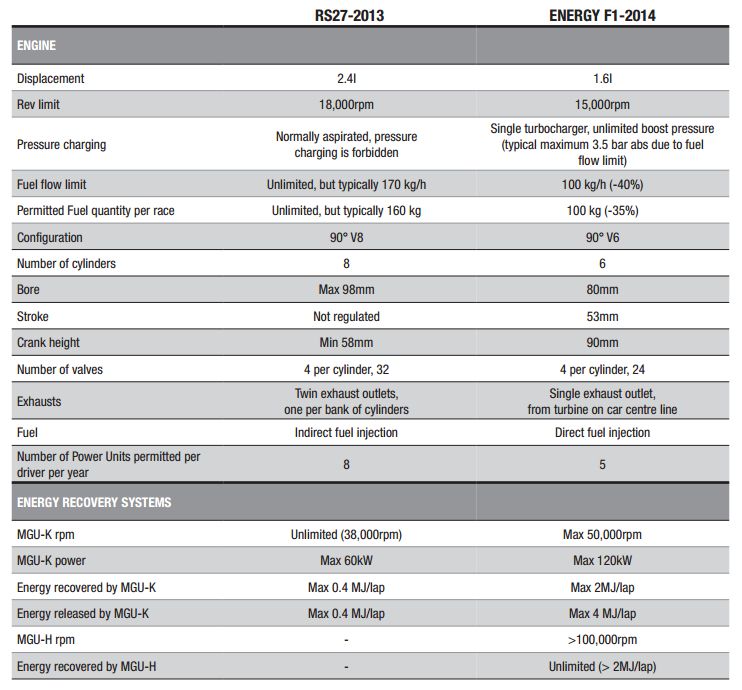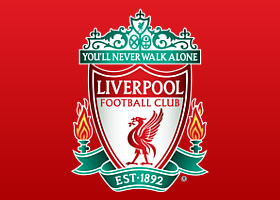vidc je napisao/la:zvuk:
http://www.renaultsport.com/Come-on-fee ... ml?lang=fr" onclick="window.open(this.href);return false;

Moderatori/ce: F1NAC,Zweki,Scuderia,Cuky,47,gringo73

vidc je napisao/la:zvuk:
http://www.renaultsport.com/Come-on-fee ... ml?lang=fr" onclick="window.open(this.href);return false;








The stewards asked the Pirelli representatives about which teams have been involved in tyre testing. They answered that during 2012 it was only Ferrari and
this year Red Bull (sic)and Mercedes.


Zanimljivo. Najglasniji su uključeni.F1NAC je napisao/la:The stewards asked the Pirelli representatives about which teams have been involved in tyre testing. They answered that during 2012 it was only Ferrari and
this year Red Bull (sic)and Mercedes.








IZVORNew F1 Side Impact System
The FIA Institute has been working with Formula One teams to develop a new side impact system that will be on all cars next season
When the Formula One cars line up on the grid for the first race next season, few will realise that one of the biggest safety developments in recent years has taken place under their bodywork. Peel back the sidepods, though, and you will see that every car is sporting a new advanced side impact protection system.
It is the result of a year-long collaboration between the FIA Institute and F1 teams to develop a side impact system that works effectively, regardless of the angle of impact.
FIA Institute research consultant Andy Mellor, who led the project, explains: "We went back to basics to examine what a side impact structure really needs to do in different types of accident. We used Robert Kubica's crash in Montreal as a specific reference point since that was a major impact at an acute angle."
The current side impact system deploys crushable tube structures attached to the side of the chassis. Although extremely effective during normal impacts, they can break off during oblique impacts due to the extremely high tangential forces that are generated during the first few milliseconds of an impact. So Mellor engaged with the F1 teams to help develop solutions to the problem. Marussia, McLaren, Mercedes and Red Bull Racing each stepped forward.
Initial testing benchmarked performance of current structures using a new dynamic oblique impact test configuration. The core R&D then investigated two discrete options in parallel: optimised carbon tubes and crushable carbon sandwich panels. The latter comprised a variety of energy absorbing filler materials including foams, aluminium honeycombs and carbon honeycombs.
The testing concluded that the carbon tubes had far more potential to provide an efficient, lightweight and robust solution, able to manage impact loads effectively in both lateral and for-aft directions. The panels, in comparison, were surprisingly inefficient.
The winning solution was based on an initial design by Marussia, before undergoing extremely detailed optimisation by Red Bull Racing – an evolution of the current system, but using high-performance carbon fibre with a very bespoke external and internal geometry and precise layup configuration.
Paul Monaghan, Head of Car Engineering at Red Bull Racing, explains: "There were three teams that ultimately submitted impact devices that were subjected to a physical test, and ours was deemed to be the best of the bunch, so we pursued that device further."
The solution is a pair of structures fitted to each side of the car that do not shatter on impact but progressively crush and decelerate the car in a very controlled manner. During testing, the pair of structures were able to absorb nearly 40kJ of energy in both normal and oblique impact directions – a major advancement over current designs. In order to achieve this, the structures must develop huge forces; over 15 tonnes squeezing the chassis and 11 tonnes trying to tear the structure off the chassis.
The teams agreed to implement this system for 2014 at the F1 Technical Working Group meeting on 17 May 2013. At the same time, the technical requirements for mounting the structures to the chassis were defined, in order to ensure compatibility with all cars whilst providing the teams with a large degree of design freedom. Now it is up to each team to decide precisely how best to incorporate it into the design of their cars from 2014 onwards.
Monaghan says: "The tube has a common specification but how teams put it into their cars is entirely their business. The static tests that will be undertaken on the monocoque will determine the strength of the mounts and make sure that they are sufficient to support the tube. After that, it's down to the teams as to how they integrate it and how they design their car around it."
What is certain is that the new system will further improve safety while at the same time reducing costs for the teams. "One of the driving forces for this was to spare teams extra expense in the testing process," explains Monaghan. "Assuming everybody has a monocoque which is strong enough and passes the static tests, then they've saved money, as they're not doing an impact test. It should be a cheaper solution."
Monaghan adds that working with the FIA Institute on this project was "very easy, very straightforward" and he is delighted with the results. As he puts it: "We have a good solution, based upon sensible and sound engineering with some pretty good rationale behind it."





Jun.29 (GMM) Next year's V6 engines will be more powerful than the V8s of 2013, according to Germany's Auto Motor und Sport.
Previously, it was thought not only that next year's energy recovery-bolstered turbo V6s would be quieter than the normally-aspirated V8s, but also obviously slower.
F1 Engine
F1 Engine
Photo by: XPB Images
Not so, at least on the latter detail, according to correspondent Michael Schmidt.
Currently, the V8 KERS-boosted 2.4 litre V8s pack about 800 horse power, with about 350 newton-metres of torque.
The engine makers Renault, Mercedes and Ferrari are understandably holding their cards close to their chests, but Schmidt reports that Pirelli is expecting cars with full boost next year to be propelled in qualifying by up to 900 horse power.
And torque is set to increase dramatically, to 600 newton-metres.
Pirelli's Paul Hembery said: "At the moment we don't know exactly what to expect.
"But the numbers we are hearing are enormous. We will have to have wider rear tyres, but how wide is something we will have to decide in consultation with the teams."
However, heavily-degrading tyres will not dominate F1 next year. Hembery said that for "the first year of the new formula, we will be conservative".
The teams got a first taste of the experimental hard compound on Friday, and Felipe Massa blamed the cold tyres for his crash on a wet track.
But the degradation was very low, Hembery said.
"Red Bull would have loved these tyres," the Briton smiled. "Unfortunately they didn't try them."




Formula 1 race director Charlie Whiting has revealed that he came close to red-flagging the British Grand Prix in the wake of the multiple tyre failures.
With Lewis Hamilton, Felipe Massa, Sergio Perez and Jean-Eric Vergne all suffering major blow-outs in the early phases of the Silverstone race, Whiting says it had crossed his mind to stop the race on safety grounds.
"It was quite close to being red-flagged; it did occur to me to do that," explained Whiting after the race.
When asked if just one more failure in that phase of the race would have been enough, Whiting replied: "I'm not going to give a specific number. Obviously to clear up all that debris was putting marshals at risk, and it is not satisfactory.
"We haven't seen a failure like this before; we have seen other types of failure - and that is what has been addressed. So we need to analyse it very carefully to see if we can establish the cause."
Whiting said the FIA needed to get answers from Pirelli about what it believes caused the incident before it could establish a way forward.
"It is too early to draw any conclusions," said Whiting. "They have a lot of analysing to do, including the tyres that didn't fail – because maybe we will find something there that was on the verge of failing that will give us a better indicator of what happened.
"It is too early to say what will happen, so it's too early to say what needs to be done."
The tyre safety issue has been added to the agenda of next week's Sporting Working Committee meeting that was already scheduled to take place at the Nurburgring ahead of the German Grand Prix.
However, Whiting believed that the tyre situation needed to move forward before then – so solutions could be put in place.
"We will be on it first thing in the morning," he said. "Pirelli have got to analyse it, to try and find the cause. We need to make decisions earlier than Wednesday."



...najobičnija glupost ali s ovakvim naslovima Sky se spušta na nivo 24 sata...sve je i dalje upravo onakvo kakvo treba biti Berniju - priča se, piše se na sve strane o svemu, svi gledaju kako će se nova "afera" rasplesti...Domi je napisao/la:Momčadi bi mogle bojkotirati VN Njemačke !
http://www1.skysports.com/formula-1/new ... e-blowouts" onclick="window.open(this.href);return false;





Ferrari, Lotus and Force India will no longer stand in the way of any move by Pirelli to change the tyres following the British Grand Prix dramas.
The three outfits lobbied against Pirelli's push to tweak specifications for the Canadian GP because they feared the changes to cure delaminations would affect the competitive order.
But after a number of spectacular blow-outs at Silverstone, the teams say that matters have now got more serious and that safety concerns need addressing.



